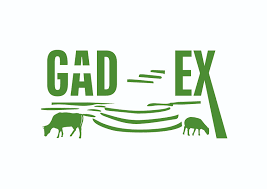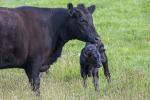
Biodiversity Foundation GAD-EX Laboratory Project: Actions to improve biodiversity through extensive livestock farming in the UNESCO Las Loras Geopark in Castile and León
- Type Project
- Execution 2024
- Scope Europeo
- Main source of financing Recovery, Transformation and Resilience Plan (PRTR)
- Project website Web proyecto (Fundación Biodiversidad)
The GAD-EX LABORATORY project seeks to promote and enhance extensive livestock farming for a transition that allows for improved sustainable use, with more modern and future-proof livestock farming that ensures the survival of existing farms and attracts new livestock farmers. The GAD-EX LABORATORY project will work with different types of traditional livestock such as horses, sheep, goats, beekeepers, and also with cattle, promoting diverse activities adapted to the environment. It will involve all areas of the region, while integrating a technology center that will analyze the actual results and future replicability of the actions, as well as livestock farmers, forest managers, administrations, associations, etc. Forest stands of different characteristics have been included, where their management, conservation, resilience, and biodiversity will be improved as an active and fundamental part of communities, their society, and their economy.
Creation of an operational coordination and monitoring group. Improvement actions in mountain and forest areas for extensive livestock farming. Installation of green hedges or hedgerows to promote biodiversity as an element of extensive livestock management. Improvement of extensive livestock infrastructure. Improvement of the Castrecías shepherd's house as a facility for transhumant livestock farmers. Use of goat and horse farming to clear forest areas in Valtierra de Albacastro. Use of beekeeping as a complement to other extensive livestock farming and as a biodiversity enhancer. Use of new technologies to analyze the evolution of biodiversity in livestock grazing areas in different areas. Accounting for ecosystem services linked to extensive livestock farming in the Geopark. Improvements in the production and marketing of products derived from extensive livestock farming. Communication and awareness-raising.
The Las Loras geographical area, declared a UNESCO Global Geopark in 2017, comprises a highly conserved territory that includes the Hoces del Alto Ebro and Rudrón Natural Park and the Humada Peña Amaya SPA in Burgos; and the Las Tuerces and Covalagua Protected Natural Areas in Palencia. Within the Geopark, extensive livestock farming and the forest environment are among its main pillars. Both represent intrinsic resources that must be combined and managed as a fundamental tool in the fight against depopulation, generating stable rural activity, and helping towns adapt to climate change.
Carry out actions to promote extensive livestock farming as a tool for fostering biodiversity, the bioeconomy, and combating rural depopulation in the Las Loras Geopark, in the provinces of Burgos and Palencia.
- Asociación para la Reserva Geológica de Las Loras (ARGEOL)







